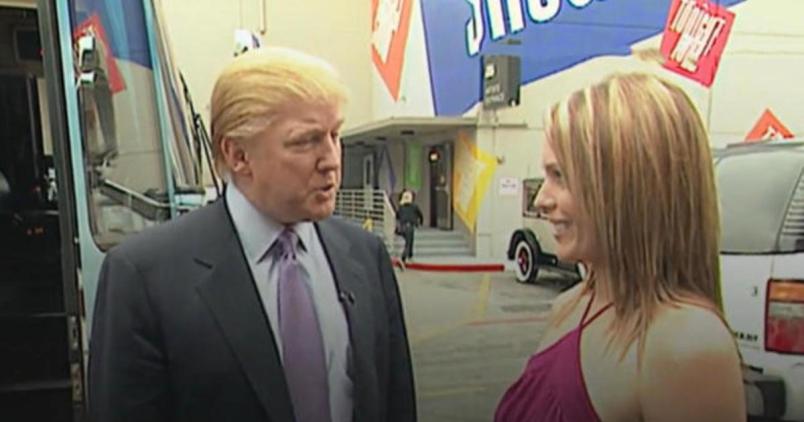Roger Stone’s indictment last week laid out juicy, inside details about his alleged attempts to contact Wikileaks, including the tantalizing allegation that the Trump campaign directed him to do so.
Facing criminal charges hasn’t stopped the longtime GOP operative from getting caught up in a catfight with conspiracy theorist Jerome Corsi, over conversations the two had in the hours before Trump’s now-notorious Access Hollywood tape was released.
But what seems to be yet another bizarre Stone-related imbroglio has the potential to answer larger questions about why Wikileaks began releasing the Podesta emails half an hour after the Washington Post published the Access Hollywood tape on Oct. 7, revealing Trump’s “Grab ’em by the pussy” remarks.
According to Corsi’s account, Stone frantically called him in the hours before the now-infamous video dropped, demanding that he push Wikileaks into publishing the Podesta emails as a way of diverting attention from the impending story.
Stone’s indictment records an associate of Trump campaign chair Stephen K. Bannon texting Stone “well done” after the release, and states that Stone went on to claim credit for the leak in the days after Wikileaks began the dump.
If Corsi’s account is true, Stone would have known before nearly anyone the Access Hollywood tape was about to be made public. That raises fascinating questions about how Stone would have learned that the tape was coming. It also raises separate questions of whether – and how – he managed to contact Wikileaks, and why at least one Trumpworld figure in the indictment appeared to attribute the document release to Stone.
Corsi, a longtime fabulist, backs up his account in a book about the matter with phone records that the special counsel purportedly accessed during his investigation, supposedly showing that Corsi and Stone spoke multiple times the day the tape was published.
It’s important to note that even in a Trumpian world of unreliable narrators, Corsi stands out as particularly mendacious. He developed both the swift boat and birther conspiracy theories, and so it’s difficult to rely on him as a narrator of what happened, in spite of the fact that he was present for some crucial events in 2016.
However, the Stone indictment tended to hew more to Corsi’s version of events – supporting earlier assertions he made in a draft plea agreement he released to the press in November.
Stone himself was less than helpful in an email exchange with TPM, declining to answer specific questions, writing “All false!” after an Infowars-sponsored press conference yesterday in Washington. Stone has pleaded not guilty to the charges in the indictment.
A look at the timeline of events in the days and hours leading up to when Wikileaks began publishing the Podesta emails on Friday, Oct. 7 raises serious questions about how Stone learned what and when.
The now-infamous tape of Trump talking with Billy Bush on the Access Hollywood bus first surfaced within NBC on Monday, Oct. 3, when an Access Hollywood producer reportedly unearthed it from the company’s archive. The tape sparked an internal discussion at the network over what to do with it.
That same day, Stone was trying to get in touch with Trump campaign chairman Stephen K. Bannon about Assange and the then-impending release of the Podesta emails.
“A load every week going forward,” Stone wrote to Bannon in an email the next day, Oct. 4, that was first reported by the New York Times and cited in last week’s indictment.
Throughout the week, Stone allegedly continued to agitate for the release. In the words of Randy Credico to Mother Jones, Stone “was wigging out” about getting Wikileaks to drop the materials.
But on Friday morning of that week, Stone purportedly began to ‘wig out’ even further, to cite Credico.
At around 11:00 a.m. ET that day, Washington Post reporter David Fahrenthold had received a copy of the Access Hollywood video from a source. Throughout the day – and before the Washington Post published the story online at around 4 p.m. ET – Fahrenthold put out requests to NBC and the Trump campaign for comment.
Corsi’s phone records show that he and Stone held a call at around 11:30 a.m. ET. Corsi recalled to TPM in December that Stone continued to phone him throughout the day.
“I recall Roger telling me that the Billy Bush tape was going to be that day and Roger was saying to me, ‘if you have any way to get Assange to start dropping, tell him to start dumping,'” Corsi said.
It’s not clear how Stone knew that “the Billy Bush tape” was about to be published.
The fact that the Washington Post reporter had sent out requests to NBC and the Trump campaign could narrow down the potential list of sources.
Corsi told TPM that he had records of two more phone calls with Stone on that day before the Access Hollywood tape was published at 4 p.m. ET. He alleged in his since-published book that those calls occurred at 1:42 p.m. ET and 2:18 p.m. ET.
Before the tape was published and Wikileaks started dumping, Corsi spoke with London-based conservative writer Ted Malloch on a conference call. Corsi, a 72-year old conspiracy theorist, told TPM that other “granular” details had since slipped his mind.
“This is what frustrated the special counsellor,” Corsi said. “We kept thinking about all the possible people with whom I might have had contact.”
When the Post published the Access Hollywood tape, it elicited widespread revulsion and calls from within the Republican Party for Trump to step down as presidential candidate. Famously, the campaign held a meeting of top staffers in which future chief of staff Reince Preibus urged Trump to step down, while Bannon advised him to continue.
Half an hour after the tape was published, Wikileaks began dumping emails taken from Hillary Clinton campaign chairman John Podesta’s personal account.
The special counsel’s interest in the episode has apparently continued into probing what interactions took place after the Wikileaks’ email release.
The Stone indictment records a Bannon associate as texting the longtime GOP operative “well done” after the Wikileaks release.
Corsi wrote in his book that “[special counsel attorney Aaron] Zelinsky revealed that after October 7, 2016, the prosecutors had evidence of an email exchange between Stone and me in which Stone expressed pleasure that Assange had released the Podesta emails as instructed, and in which I replied that Stone and I ‘should be given credit.'”
It remains unclear how Assange may have been “instructed.”










